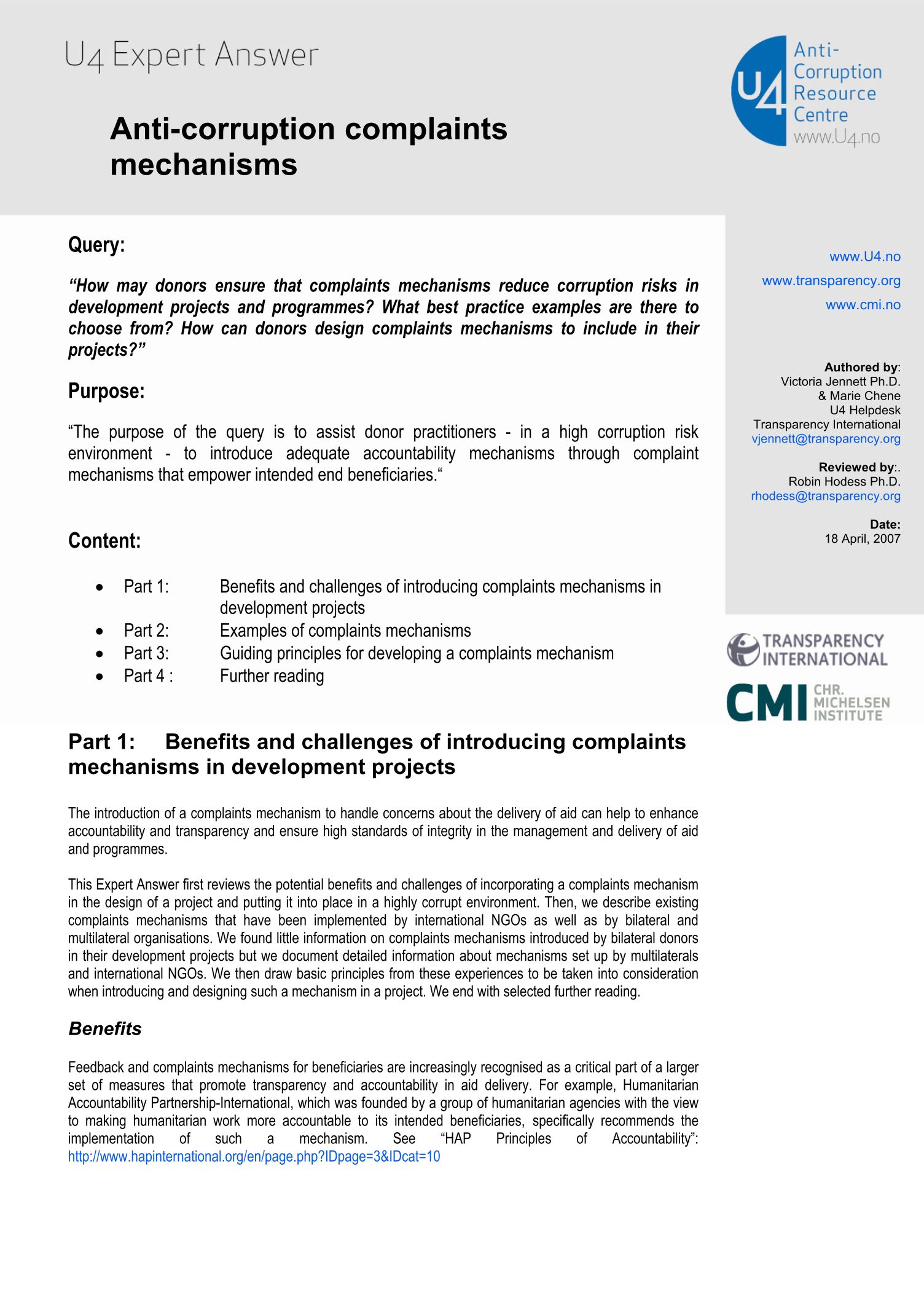U4 Helpdesk Answer
Anti-corruption complaints mechanisms
Complaint mechanisms have been introduced in various development programmes and countries as diverse as Cambodia, Zimbabwe, North Caucasus and Pakistan to provide beneficiaries with a channel to report irregularities. They contribute to promote high standards of integrity in aid delivery by demonstrating agencies’ commitment and leadership against corruption, helping map corruption risks and empowering beneficiaries. To be credible however, they must have the capacity to manage and solve complaints, enforce recommendations, impose sanctions as well as protect whistle blowers. In addition, they should have an advisory, compliance and complaints handling role as well as be designed in a way that ensure that they are accessible, independent, transparent and accountable.

Cite this publication
Jennett, V.; Chêne, M. (2007) Anti-corruption complaints mechanisms. Bergen: U4 Anti-Corruption Resource Centre, Chr. Michelsen Institute (U4 Helpdesk Answer Helpdesk 2007)
Disclaimer
All views in this text are the author(s)’, and may differ from the U4 partner agencies’ policies.
This work is licenced under a Creative Commons Attribution-NonCommercial-NoDerivatives 4.0 International licence (CC BY-NC-ND 4.0)